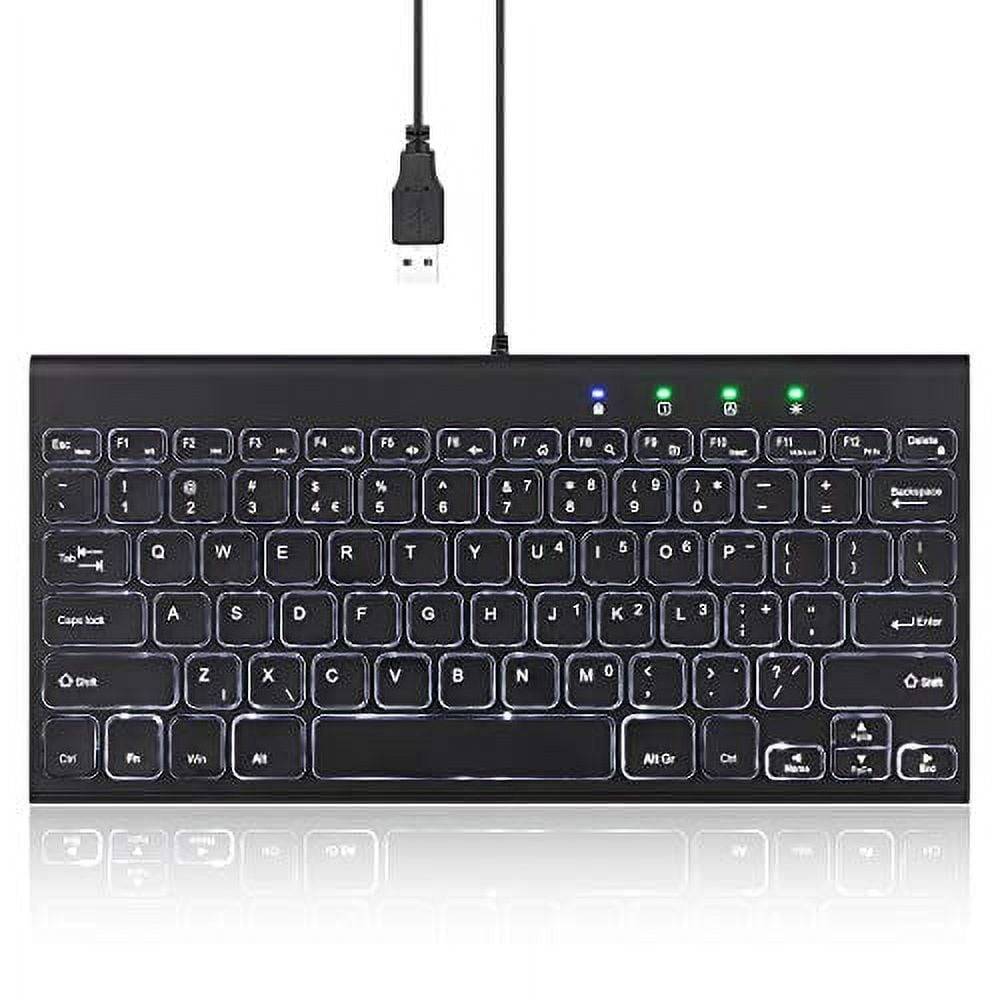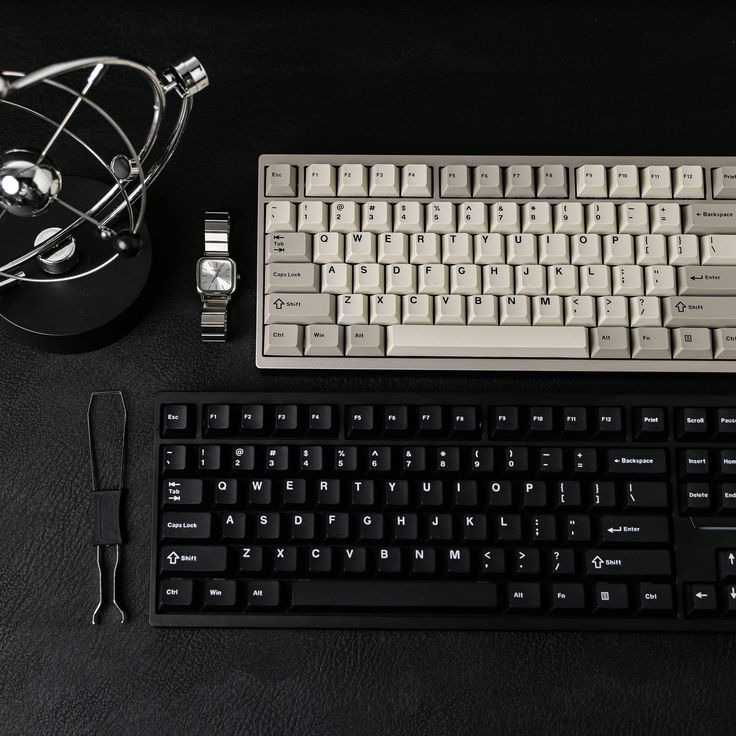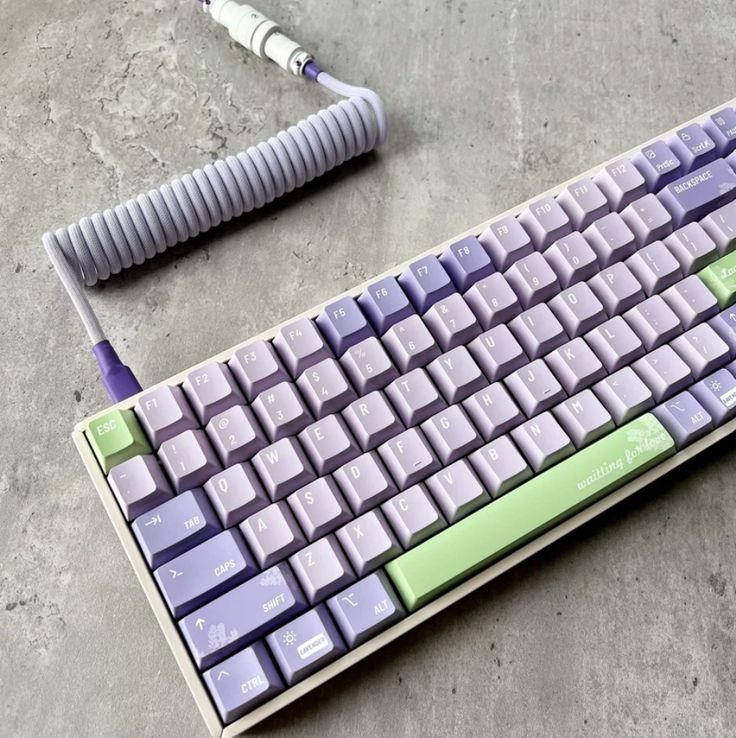Identifying Your USB Keyboard Problem
Before we dive into troubleshooting, identifying the exact issue with your USB keyboard is crucial. Start by asking yourself a few questions. Does the keyboard not respond at all? Are specific keys not working? Is there an error message when you connect your keyboard to your computer? The answers to these questions provide a starting point for resolving the problem.
First, check if the USB keyboard is receiving power. Look for indicator lights on the keyboard that signal it is turned on. If there are no lights, try plugging it into a different USB port or another computer to rule out the port issue.
Next, examine the keys themselves. Sticky or unresponsive keys can indicate debris or damage. Gently shaking the keyboard upside down or using compressed air can remove trapped dust or dirt.
If your keyboard powers on but isn’t recognized by your computer, an error message might appear. Take note of this message, as it can offer valuable clues. Common alerts mention device not recognized, driver errors or hardware failures.
In cases where your usb keyboard works partially, consider if a recent liquid spill or physical impact might be the cause. Such events can lead to certain keys failing while others operate normally.
By narrowing down the symptoms, you can move on to targeted troubleshooting steps that address your usb keyboard’s specific problem.

Basic Troubleshooting Steps
When facing issues with your usb keyboard, start with these basic steps:
- Check the Connections: Ensure your keyboard’s USB cable is firmly connected to the USB port. Try different ports or use another computer.
- Restart Your Computer: Sometimes, a simple restart can resolve problems as it refreshes the system.
- Test the Keyboard on Another Device: This can confirm if your keyboard is working correctly.
- Inspect for Physical Damage: Look over your keyboard for signs of damage. Check the USB cord for any splits or kinks.
- Clean the Keyboard: Dust and debris can cause key malfunction. Use compressed air or a soft cloth to clean it.
- Update Your Operating System: Make sure that your system is up-to-date, as this can resolve compatibility issues.
- Check Power Supply: If you’re using a desktop, ensure the power supply is sufficient for all connected devices.
- Consult the Manual: Reference your keyboard’s manual for specific troubleshooting tips related to your model.
- Use a Different USB Cable: If your keyboard uses a detachable cable, try a different one to rule out cable issues.
After completing these steps, if your usb keyboard is still not working, you might be dealing with more complex issues like driver problems or hardware conflicts. In the next sections, we’ll delve into those topics.
Resolving Driver Issues
When you encounter problems with your USB keyboard, driver issues could be the cause. Drivers are software components that allow your computer’s operating system to communicate with hardware devices. If these drivers are outdated, corrupt, or missing, your USB keyboard may not function correctly. Here are steps to resolve driver-related problems:
- Update Drivers: Visit the keyboard manufacturer’s website to download the latest drivers. Ensure that the drivers are compatible with your operating system.
- Reinstall Drivers: If updating doesn’t work, try reinstalling them. Go to your computer’s Device Manager, locate the keyboard, and uninstall the driver. Then, disconnect and reconnect the USB keyboard to auto-install the driver.
- Use Windows Update: On Windows, the built-in update feature can find and install the correct drivers for your USB keyboard. Check for updates regularly.
- Driver Management Tools: Consider using third-party driver management software. These tools can automatically identify and update all of your system’s drivers.
- Restore System: If driver issues started after a system change, use System Restore. It can revert your computer’s settings to a previous state where the USB keyboard worked well.
- Check for Compatibility: Ensure that your keyboard’s drivers are designed for your version of the operating system.
- Contact Support: If you’ve tried the above steps without success, reach out to customer support. They may have specific solutions for your USB keyboard model.
Remember to perform these steps one at a time and test your USB keyboard after each to pinpoint the problem. Driver issues are common, but with patience, they are often resolvable.

Dealing with Hardware Conflicts
When troubleshooting your usb keyboard, hardware conflicts can sometimes be the root cause. These conflicts occur when two or more hardware devices compete for your computer’s resources, leading to malfunctions. Here’s how you can resolve potential hardware conflicts:
- Check Device Manager: Open Device Manager on your PC. Look for any warning icons that indicate a conflict.
- Disable Conflicting Devices: Temporarily disable other devices to see if the problem resolves. This can help you identify the conflicting device.
- Reassign Resources: Some devices allow you to manually reassign resources like IRQs within the BIOS or UEFI settings.
- Unplug Unnecessary Devices: Remove other USB devices. This can reduce the load on your system and minimize conflicts.
- Update BIOS/UEFI: Sometimes, updating your system’s BIOS or UEFI can resolve underlying hardware conflicts.
- Reset BIOS/UEFI to Default: Resetting to default settings can clear improper configurations that cause conflicts.
- Try Another USB Hub: If you use an external USB hub, try connecting your keyboard directly to the computer’s USB ports.
- Check for Electrical Interference: Other electronic devices can cause interference. Move these devices away from your computer and keyboard.
By following these steps, you should be able to identify and resolve hardware conflicts that affect your usb keyboard. It’s important to tackle these issues one at a time to accurately pinpoint the cause. If you’re still facing problems after these steps, the issue may be more complex and require professional assistance.
Common USB Keyboard Error Messages and Their Solutions
When you connect your USB keyboard to your computer, error messages can be both confusing and helpful. These messages are often the key to identifying the underlying issue. Below, we outline some common USB keyboard error messages, their probable causes, and suggested solutions:
- Device Not Recognized: This error typically implies a connectivity issue. Make sure your USB keyboard is properly connected to the port. If the problem persists, try connecting to a different USB port or restart your computer.
- Driver Not Found: When your computer can’t find the keyboard driver, navigate to the keyboard manufacturer’s website and download the necessary software.
- Cannot Start Device (Code 10): This issue can be related to outdated or corrupt drivers. Update the driver via Device Manager or use a driver management tool.
- USB Device Not Working: If this message appears, disconnect other USB devices to free up system resources. Try plugging the keyboard into another computer to verify if it’s a keyboard issue.
- Hardware Failure: When a message indicates a hardware failure, check the keyboard for physical damage. If it seems undamaged, test it on another computer to confirm whether it’s an internal problem.
- Driver Error: For a driver error, it’s recommended to update or reinstall the keyboard drivers. Use your operating system’s update feature or the manufacturer’s website for the latest drivers.
By recognizing these messages and taking appropriate steps, you can address many common USB keyboard problems without extensive technical knowledge. Remember, patience and methodical troubleshooting can resolve most issues.

Fixing USB Keyboard Problems in Different Operating Systems
Different operating systems may have unique processes for troubleshooting usb keyboard issues. It’s important to know the right steps to take for the OS you are using.
Windows
If you’re using a Windows system, follow these troubleshooting steps:
- Device Manager: Access Device Manager to check for any usb keyboard errors.
- Windows Troubleshooter: Run the built-in Windows Troubleshooter for hardware issues.
- System Updates: Ensure your Windows OS is up-to-date with the latest patches.
- Control Panel: Use Control Panel to manage hardware and devices.
macOS
Mac users can try the following:
- Apple Menu: Go to the Apple menu to check for software updates.
- System Preferences: Examine keyboard settings in System Preferences.
- Safe Mode: Boot in Safe Mode to diagnose issues with startup items or extensions.
- Reset SMC: Reset the System Management Controller if you’re using a Mac with Intel processors.
Linux
For Linux systems, consider these steps:
- Terminal Commands: Use terminal commands to check usb keyboard recognition.
- Distro Repositories: Install or update driver packages from your distribution’s repositories.
- Xorg Configuration: Adjust Xorg configuration files for keyboard settings.
By tailoring your approach to the operating system, you can more effectively solve usb keyboard problems. Always start with the basics before moving on to system-specific resolutions.
Advanced Troubleshooting Techniques
When basic troubleshooting does not resolve your USB keyboard issues, you may need to apply more advanced techniques. Here are some steps to consider:
- BIOS/UEFI Configuration: Check the BIOS or UEFI settings on your computer. Ensure USB support is enabled and there are no conflicting settings that might affect keyboard operation.
- Firmware Updates: Some USB keyboards have firmware that may need updating. Visit the manufacturer’s website to check for firmware updates that can enhance compatibility and performance.
- System File Checker (SFC): On Windows, use the System File Checker tool. It can repair corrupted system files that might be causing keyboard issues. Open the Command Prompt and type
sfc /scannowto run the tool. - Check for Malware: Malware can interfere with hardware drivers and operation. Run a complete system scan with reliable security software to detect and remove any threats.
- Boot in Safe Mode: Starting your computer in Safe Mode (for Windows) or Safe Boot (macOS) can help diagnose if third-party software is causing conflicts with your USB keyboard.
- Create a New User Account: Sometimes, user account settings cause problems. Creating a new user account can test if issues are related to specific user configurations.
- Consult Online Forums: Look for solutions on tech forums. Other users may have experienced similar problems and can offer valuable insights.
- Seek a Specialist’s Help: If you’re not tech-savvy, consider bringing your USB keyboard to a specialist. They have the tools and experience to diagnose and fix complex hardware issues.
By exploring these advanced troubleshooting techniques, you increase your chances of resolving the more complex problems with your USB keyboard. Patience and a systematic approach are key during this process.
When to Seek Professional Help or Consider Replacement
Sometimes, despite your best efforts in troubleshooting, your USB keyboard issues may persist. When you encounter such scenarios, it might be time to seek professional help or consider replacing your keyboard. Here’s a guide on when to take these steps:
- Persistent Problems: If you’ve completed all the troubleshooting steps and the issue still occurs, professional help is advisable.
- Recurring Error Messages: When the same error messages keep appearing, it could indicate a deeper issue that requires expert attention.
- Physical Damage: If there’s visible damage to the keyboard that you can’t repair, like broken keys or circuits, replacement is the likely solution.
- Frequent Disconnects: A keyboard that frequently disconnects from the system could have internal faults that need a specialist’s attention.
- Loss of Functionality: When the keyboard loses functionality or specific keys stop working altogether, it may be beyond repair.
- Out of Warranty: Check if your keyboard is still under warranty. If it’s not, and issues are severe, consider buying a new one.
- Obsolete Technology: Sometimes, it’s not about the keyboard’s condition but its compatibility with newer systems. Upgrading to a more recent model could solve this.
- Specialist Recommendations: If a tech specialist recommends replacement after an assessment, it’s wise to follow their advice.
If you decide to get professional help, research reputable service providers or contact the keyboard’s manufacturer for support. When choosing a replacement, look for keyboards that suit your needs, with good reviews and reliable warranties. Treating your equipment with care can prevent many issues, but sometimes, replacing an old or damaged keyboard is the most efficient way to get back to a productive workflow.